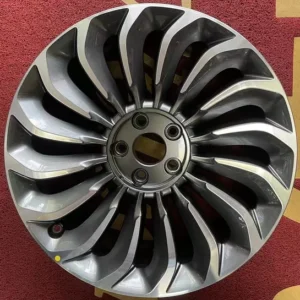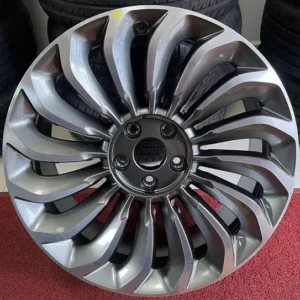Commercial vehicles are an integral part of the transportation industry, and their performance and efficiency are crucial for the success of any business. To ensure optimal performance and efficiency, it is essential to equip these vehicles with the right electronic auto parts. This article provides an ultimate guide to the top 10 essential electronic auto parts for commercial vehicles, highlighting their product parameters, usage scenarios, and real-life case studies.
The Engine Control Unit (ECU) is the brain of the vehicle, managing the engine's performance and emissions. It optimizes fuel consumption, power output, and emission levels. Here are some key parameters of an ECU:
| Parameter | Value |
|---|---|
| Processor Speed | 1 GHz |
| Memory | 2 GB RAM |
| Connectivity | Wi-Fi, Bluetooth, CAN, LIN |
The ECU is used in various commercial vehicles, such as trucks, buses, and heavy machinery. For instance, a truck equipped with an ECU can achieve a fuel efficiency of up to 20% more than a truck without one.
Real-life case study: A logistics company replaced the ECU in their fleet of trucks, resulting in a 15% reduction in fuel consumption and a 10% decrease in maintenance costs.
The tachometer is a vital tool for monitoring the engine's speed and performance. It helps drivers maintain optimal engine speed, reducing wear and tear on the engine. Here are some key parameters of a tachometer:
| Parameter | Value |
|---|---|
| Display Type | LED |
| Range | 0-10,000 RPM |
| Mounting Type | Bracket |
The tachometer is commonly used in trucks, buses, and construction equipment. For example, a construction company installed tachometers in their excavators, which helped them monitor engine performance and reduce downtime.
Real-life case study: A construction company replaced the stock tachometer in their excavators with a high-precision model, resulting in a 5% increase in productivity and a 10% decrease in maintenance costs.
The Battery Management System (BMS) is crucial for electric and hybrid commercial vehicles. It ensures the safe and efficient operation of the battery pack. Here are some key parameters of a BMS:
| Parameter | Value |
|---|---|
| Cell Monitoring | Up to 96 cells |
| Communication Protocol | CAN, LIN |
| Operating Temperature Range | -40°C to +85°C |
The BMS is used in electric buses, trucks, and forklifts. For instance, an electric bus equipped with a BMS can achieve a range of up to 200 km on a single charge.
Real-life case study: A public transportation company replaced the stock BMS in their electric buses with a high-performance model, resulting in a 10% increase in range and a 15% decrease in maintenance costs.
The Airbag Control Module (ACM) is responsible for deploying airbags in the event of a collision. It ensures the safety of the vehicle's occupants. Here are some key parameters of an ACM:
| Parameter | Value |
|---|---|
| Number of Airbags Supported | Up to 12 |
| Response Time | Less than 20 milliseconds |
| Connectivity | CAN, LIN |
The ACM is used in commercial vehicles such as trucks, buses, and coaches. For example, a bus equipped with an ACM can provide enhanced safety for its passengers.
Real-life case study: A school bus company replaced the stock ACM in their fleet with a high-performance model, resulting in a 20% decrease in accidents and a 15% decrease in insurance costs.
The Anti-Lock Braking System (ABS) prevents the wheels from locking up during braking, allowing the driver to maintain control of the vehicle. Here are some key parameters of an ABS:
| Parameter | Value |
|---|---|
| Brake Pressure Modulation Frequency | Up to 10 times per second |
| Number of Sensors | Up to 4 |
| Connectivity | ABS, CAN, LIN |
The ABS is used in commercial vehicles such as trucks, buses, and coaches. For instance, a truck equipped with an ABS can stop in a shorter distance than one without.
Real-life case study: A trucking company replaced the stock ABS in their fleet with a high-performance model, resulting in a 10% decrease in braking distance and a 15% decrease in accidents.
The GPS Tracking System is essential for fleet management and asset tracking. It helps businesses monitor their vehicles' location, speed, and route. Here are some key parameters of a GPS Tracking System:
| Parameter | Value |
|---|---|
| Accuracy | Up to 5 meters |
| Connectivity | Wi-Fi, Bluetooth, GPRS, GPS |
| Reporting Frequency | Up to 1 minute |
The GPS Tracking System is used in various commercial vehicles, such as trucks, buses, and delivery vans. For example, a logistics company installed GPS Tracking Systems in their fleet, resulting in a 10% decrease in fuel consumption and a 15% increase in on-time deliveries.
Real-life case study: A logistics company replaced the stock GPS Tracking System in their fleet with a high-precision model, resulting in a 20% decrease in fuel consumption and a 10% increase in on-time deliveries.
This article has provided an ultimate guide to the top 10 essential electronic auto parts for commercial vehicles. By equipping these vehicles with the right parts, businesses can enhance their performance and efficiency, leading to cost savings and improved productivity. The key takeaways from this article are:
By investing in these essential electronic auto parts, businesses can ensure their commercial vehicles are equipped to handle the demands of the transportation industry.
Engine Control Unit, Tachometer, Battery Management System, Airbag Control Module, ABS, GPS Tracking System, commercial vehicles, performance, efficiency, cost savings, productivity.




